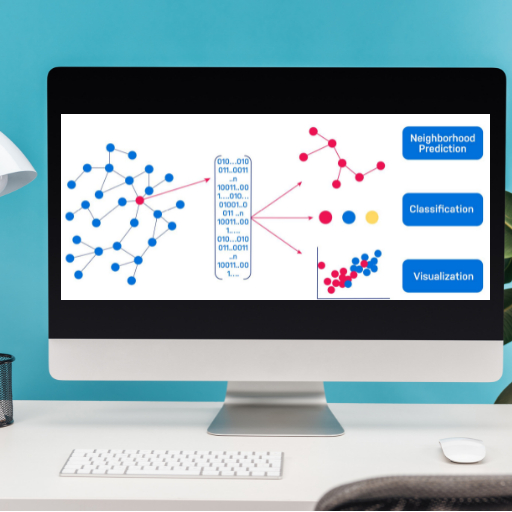This article dives into the world of OpenAI and its growing use of embeddings to enhance the power of machine learning. It provides a comprehensive guide on the various applications of OpenAI's increasingly popular embedding system, exploring topics such as natural language processing, artificial intelligence, data analysis, and deep learning.
It uncovers their uses and implications by exploring questions on how they are created, utilized, and improved in everyday tasks and applications. Rich with knowledge and insight, this article is designed to provide readers with a better understanding of the ever-evolving world of OpenAI and its essential contributions to the study of artificial intelligence.
Short Summary
OpenAI embeddings are mathematical representations used to capture the semantic meaning of words, phrases and sentences, offering cost savings, improved performance, and scalability for various natural language processing tasks. The OpenAI Embeddings API provides tools to implement embeddings in OpenAI for various applications, and cloud computing services such as Microsoft Azure, Google Cloud Platform, and Amazon Web Services offer OpenAI embeddings with scalability, cost-effectiveness, and ease of use.
What are Embeddings?

Embeddings are a powerful tool used in machine learning and artificial intelligence. They are mathematical representations used to capture the semantic meaning of words, phrases, and sentences, allowing us to capture knowledge in a way that is more accurate and efficient than traditional methods. Embeddings can encode data into a much smaller and more accessible space, providing us with a representation that is often more useful than the original data.
OpenAI is one such organization using embeddings to enhance machine learning models, providing users with the ability to search large datasets for relevant information quickly and accurately. In this section, we will explore the basics of embeddings and how they can be used in OpenAI.
What is an embedding?
Embeddings are a type of mathematical representation used to capture the semantic meaning of words, phrases, and sentences. A single embedding is a vector of floating-point numbers, representing the data in a much lower dimensional space. The Universal Sentence Encoder (USE) is a popular embedding algorithm, which produces embeddings of 512 dimensions.
Embeddings can encode data into a much smaller and more accessible space, allowing us to store and access large amounts of data quickly and accurately. By encoding data into a lower dimensional space, it can be used for a variety of tasks such as clustering, similarity measures, and text search.
How do embeddings work?
Word embeddings are a technique used in natural language processing to represent words as real-valued vectors in a lower-dimensional space. This technique allows us to capture the context and meaning of a word in a document, allowing for efficient and accurate comparison of words and sentences.
Embedding models can capture the semantic similarity between two or more pieces of text, by measuring the cosine similarity between two vectors projected in a multi-dimensional space. Cosine similarity is a measure of the angle between two vectors, which is a much more efficient way to measure similarity than counting common words.
This method is beneficial for comparing large documents to short queries, as an expansion in document size will not lead to a greater number of common words detected even between completely disparate topics.
What are the benefits of using embeddings?
Embeddings are a powerful tool for natural language processing tasks, offering a range of benefits. By representing data in a lower dimensional space, they can reduce encoding costs and allow for efficient processing of large inputs. Embeddings can also be derived from large unannotated corpora, lowering the cost of creating models for particular use cases.
Additionally, embeddings provide a semantically meaningful representation of words, which can improve the performance of NLP models. Embeddings have various applications. They are used for clustering, topic modeling, deduplication, paraphrase mining and semantic search.
In this section, we have explored the various benefits of using embeddings for natural language processing tasks.
OpenAI and Embeddings

OpenAI is an American artificial intelligence research laboratory that aims to develop and direct artificial intelligence in ways that benefit humanity as a whole.OpenAI consists of the non-profit OpenAI Incorporated and its for-profit subsidiary. OpenAI is dedicated to developing and directing artificial intelligence in ways that benefit humanity as a whole.
OpenAI uses a variety of tools and models such as GPT-3 and SpladeV2 to encode information and create embeddings. OpenAI embeddings can be used for text search, text similarity, and other natural language processing tasks.
In the next section, we will look at what OpenAI is and how it uses embeddings.
What is OpenAI?
OpenAI is an American artificial intelligence research laboratory consisting of the non-profit OpenAI Incorporated and its for-profit subsidiary. OpenAI was co-founded by Elon Musk in 2015, but he later left the company. OpenAI is dedicated to developing and directing artificial intelligence in ways that benefit humanity as a whole.
OpenAI offers a variety of available models, such as GPT-3 and SpladeV2, as well as an API for accessing their embeddings. OpenAI embeddings are used for text search, text similarity, and other natural language processing tasks.
How does OpenAI use embeddings?
OpenAI uses embeddings to represent the semantic meaning of the text in a vector space, which can be used for various natural language processing tasks. OpenAI embeddings use cosine similarity to compare documents and a query. This technique measures the angle between two vectors to determine how similar they are. Common words are represented by vectors that are close in the vector space and similar documents have vectors that are closer together than less similar documents.
OpenAI embeddings can also be used to compare queries to documents and find the most relevant results.
What are some common applications of OpenAI embeddings?
OpenAI embeddings can be used in a variety of applications, including text similarity, text search, and text classification. Text similarity models use OpenAI embeddings to measure the similarity between two pieces of text by calculating the cosine similarity between the vectors of the documents. Text search models use OpenAI embeddings to compare a query to documents and find the most relevant results. Text classification models use OpenAI embeddings to classify text into different categories.
OpenAI embeddings can also be used for semantic search, vector space models, and paraphrase mining. Semantic search is the process of finding documents that are related to a given query. Vector space models use OpenAI embeddings to create a vector space where documents can be compared and clustered. Paraphrase mining uses OpenAI embeddings to find two documents that are similar in meaning but use different words.
OpenAI embeddings can also be used for tasks such as clustering datasets and creating input data for clustering. OpenAI embeddings provide access to datasets with higher dimensionality than open-dense models, allowing them to perform tasks such as clustering and dimensionality reduction. OpenAI embeddings can also be used to create input data for clustering and to answer questions based on the data.
Using OpenAI embeddings can be expensive, but the results are often worth the cost. OpenAI models have been benchmarked on a variety of datasets and have shown good results. The OpenAI Davinci model comes with a hefty price tag. It costs over $1 million to encode all English Wikipedia articles using this model. There are also some downsides to using the OpenAI embeddings endpoint, such as high costs, high dimensionality, and extreme latency when computing embeddings. However, the benefits of using OpenAI embeddings often outweigh the downsides.
Implementing Embeddings in OpenAI

In this section, we will explore the different tools and techniques available for implementing embeddings in OpenAI.OpenAI has its own Embeddings API that can be used for natural language and code tasks. Additionally, there is a Python package called Embedme that allows for easy creation and searching of text embeddings using OpenAI's API.
Azure OpenAI's embeddings tutorial is available for further insight on document search. It explains how to utilize embeddings to get meaningful results. By leveraging the tools available for implementing embeddings in OpenAI, you can create powerful models that can be used for a variety of tasks.
With the right tools and techniques, implementing embeddings in OpenAI can be a powerful and cost-effective way to improve the accuracy of your models.
What tools can I use to implement embeddings in OpenAI?
OpenAI has introduced a new endpoint in their API called "embeddings" that makes it easy to perform natural language and code tasks using embeddings. This endpoint allows us to create vector representations of text data, including text strings, models, and two inputs.
The Embeddings API can be used to create embeddings from a large corpus of text and then index them in a vector database. Using open-source frameworks such as sentence transformers, embeddings can be easily computed for sentence transformers.
Furthermore, the Embeddings API is compatible with local machines or servers, making it easier to populate the index with the TREC dataset. By leveraging the tools available for implementing embeddings in OpenAI, you can create powerful models that can be used for a variety of tasks.
How do I fine-tune my OpenAI model with embeddings?
To fine-tune an OpenAI model with embeddings, you can represent text as numbers using embeddings and then update the weights of the model using a new dataset. For example, an n1-standard-2 instance can encode up to 100 queries per second (up to 500 with further model quantization).
The workflow for generating and indexing embeddings includes initializing a connection to OpenAI Embeddings, using OpenAI's Ada 002 model to create embeddings from the input text, initializing a connection to Pinecone, checking if an 'openai' index exists, creating an index if not, connecting to the index, loading the TREC dataset, creating vector embedding for each question, and upserting the ID, vector embedding and original text for each phrase to Pinecone. The embedding data needs to be stored in a database.
Furthermore, pre-training with large amounts of information upfront and using at least a couple hundred examples in the fine-tuned dataset are recommended for best results. By providing extra contextual information in the prompt, OpenAI can be more accurate in its answers and generate more coherent and contextually relevant responses.
What techniques should I use to prompt engineering with embeddings?
Engineering with embeddings is a powerful tool for improving the performance of OpenAI models. To do this, you can use pre-trained embeddings and fine-tune them for your specific task.
Additionally, including relevant information to the question being asked can provide extra contextual information in the prompt to help OpenAI answer a question. Using embeddings is a more recommended approach instead of using the fine-trained dataset.
By using the techniques discussed in this section, you can create powerful models that are tailored to your specific task.
Cloud Computing and OpenAI Embeddings

Cloud computing has become an increasingly popular way to leverage OpenAI embeddings.By using cloud computing, OpenAI embeddings can be accessed from anywhere, at any time, without the need for a physical server or specialized hardware. OpenAI embeddings are available on a variety of cloud computing services, such as Microsoft Azure, Google Cloud Platform and Amazon Web Services.
These services offer OpenAI embeddings with different features, such as scalability, cost-effectiveness and ease of use. With cloud computing, OpenAI embeddings can be used in a variety of applications, such as natural language processing, semantic search, and clustering.
By understanding the various cloud computing services that offer OpenAI embeddings, as well as the costs associated with operating them in the cloud, you can make an informed decision about how to best utilize OpenAI embeddings for your project.
What cloud computing services offer OpenAI embeddings?
Cloud computing services such as Microsoft Azure offer OpenAI embeddings. Microsoft. Azure provides a comprehensive set of tools for OpenAI embeddings, including support for OpenAI APIs, as well as the ability to encode, store, and access OpenAI embeddings in the cloud.
Additionally, Google Cloud Platform and Amazon Web Services both offer OpenAI embeddings, offering various features such as scalability, cost-effectiveness, and ease of use. Using cloud computing services to implement OpenAI embeddings can help make the process more efficient and cost-effective.
The use of OpenAI embeddings in the cloud enables access to a range of features and services that are not available with traditional hardware solutions.
How do I compute embeddings in the cloud?

Computing embeddings in the cloud is a great way to take advantage of the scalability and cost savings of cloud computing. By using OpenAI embeddings in the cloud, you can quickly encode large datasets using SpladeV2.
SpladeV2 is an efficient and powerful encoder, capable of encoding up to 300 paragraphs per second on a T4-GPU. SpladeV2 can also be used to encode the entire Wikipedia corpus in around 1 hour, at an estimated cost of $2.50.
By leveraging the power of cloud computing, you can take advantage of OpenAI embeddings and the performance of SpladeV2 to create powerful and accurate models.
What are the costs associated with operating OpenAI embeddings in the cloud?
The cost of operating OpenAI embeddings in the cloud varies depending on the model and usage. OpenAI offers a pay-as-you-go consumption model with a price per unit for each model. The pricing options can be customized with filters to suit the specific needs of the user.
For example, if you are using OpenAI embeddings for semantic search, then you might need to store the embeddings using float16 for 12288 dimensions, which would cost around $3,000/month. Additionally, using OpenAI embeddings in the cloud can be a lot slower than using them on physical hardware, so you should factor this into your overall cost.
It is important to consider the costs associated with operating OpenAI embeddings in the cloud when using cloud computing services for OpenAI embeddings. By understanding the cost of OpenAI embeddings, you can make an informed decision about how to best leverage OpenAI embeddings for your project.
Summary
OpenAI's use of embeddings has revolutionized the way machines are able to understand and interpret language. The utilization of these mathematical representations allows for accurate comparison and measuring of semantic similarity, providing the means to expand upon existing machine perception.
Cloud computing services have taken advantage of OpenAI's embeddings, increasing scalability and efficiency all while efficiently managing cost. These solutions offer solutions for various applications including, but not limited to, text search, vector space models, clustering, and natural language processing. Furthermore, it is possible to tailor a model using pre-trained embedding and finetune weightings in order to increase accuracy.
In conclusion, OpenAI embeddings provide a reliable and cost-effective way for machines to process and understand language meaning at scale. With easily accessible solutions via cloud platforms, OpenAI embeddings are likely to revolutionize how we interact with machines, allowing us to ask questions in natural language with an understanding of context and precision.
Frequently Asked Questions
What is embeddings in OpenAI?
OpenAI's embeddings are used to measure the relatedness of text inputs. They represent a dense representation of semantic meaning, represented as a vector of floating-point numbers. This allows for the comparison of similar text inputs by measuring the distance between their respective vectors.
What embeddings does GPT use?
GPT uses the OpenAI Embeddings API to measure the relatedness of different text strings, which allows the AI to effectively fine-tune its predictions. This helps GPT in understanding the context of the data and making better decisions.
Does GPT use word embeddings?
No, GPT does not use word embeddings. It is based on the Transformer neural architecture and uses only the decoder part, without pre-trained embeddings.
How do I get embeddings?
To get embeddings, you can use a range of options from a state-of-the-art Google algorithm to using standard dimensionality reduction techniques and Word2vec, through to training the embedding as part of a larger model.
Ultimately, the best option for you depends on your own specific needs and preferences.
